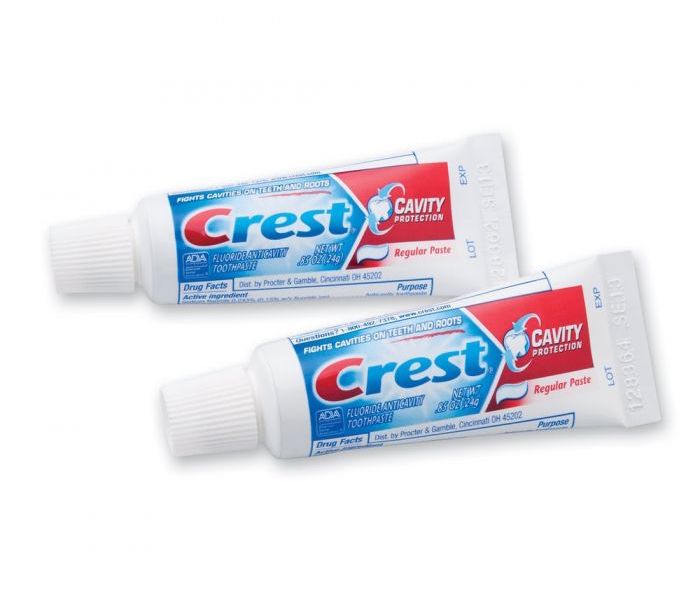Sales of travel-size goods are slowly rebounding in 2021

After a rocky pandemic year, the travel-size goods market is starting to recover.
The industry is largely made up of a mix of wholesalers that acquire travel-size items from manufacturers, as well as major brands that sell their own products in reduced sizes. Pre-pandemic it was a growing market — thanks to TSA regulations introduced in the mid-2000s that limited the size of liquids that customers could carry on board. A Marketwatch story from 2011 reported, for instance, that in the five years since 2006, sales of travel-size personal care goods had ticked up 10% on an annual basis, as more and more major brands began launching and marketing their own travel-size options. In recent years, travel sizes became a popular product increasingly among beauty brands, who sold them to customers looking to try out new brands but not wanting to commit to a full-size item.
But after years of consistent growth, the category stumbled last year. Panic buying sent sales of high-volume products surging, and left little room for the small-size items that populate hotels or airport gift shops. Meanwhile, air travel — the industry for which travel-size goods are named — fell 60% in 2020. Over the last year, sales of a few specific items — like hand sanitizer — largely kept the industry afloat. Though some travel-size goods companies were buoyed by non-travel-related sales channels that still needed smaller items.
Now, as flights start to resume their pre-pandemic frequency, travel-size items are beginning to show signs of life. But because of lingering concerns about supply chains, shuttered gift shops and potentially downstream impacts from the collapse of business travel, a full recovery might happen more gradually compared to other travel-adjacent industries.
“This category was hurt big time by the pandemic and is starting to recover,” said Justin Cohen, who sells mini toiletries, over-the-counter drugs and other items to independent pharmacies, hospital gift shops, airport gift shops and other businesses through his gift shop wholesale company Kelli’s. The category is “making a comeback, but it’s not like flipping a light switch it’s slow and steady,” he said. In general, his sales are seeing increases between 50% and 100% when compared to the same month last year.
Other categories are also seeing a boost. Joe Derochowski, the home industry advisor at NPD Group, said that travel-size garment steamers (+81%) and irons (+18%) were each up in the period between April 25 and June 12 this year, compared to their sales during the same timeframe in 2020.
Revenue diversification
In some categories, Kelli’s sales were up in 2020, depending on how he sliced it. He pointed to the health & beauty segment as one example. Overall, he said, sales of travel-size health & beauty items at Kelli’s increased by 8% in 2020 — but that’s largely because hand sanitizer was included in that segment. When subtracting PPE items, however, he said the category was down 44% in 2020. At his company, travel-size over-the-counter drugs, meanwhile, fell around 51% in 2020 compared to 2019.
Not every company reported seeing big sales declines. “We haven’t seen too much disruption on our side,” said Paul Shrater, whose company Minimus specializes in selling travel-size products across all categories both direct-to-consumer and at wholesale. He noted that, save for some early peaks of hand sanitizer sales and other blips in certain travel-size product categories, “our sales have been steady” over the past year.
Ad position: web_incontent_pos1
That, he said, is largely because of how diversified travel-size products are. “I actually think air travel is only a small percent of how and why those products are used,” he said. Shrater pointed out that many of the biggest buyers of travel-size goods are prisons, homeless shelters, hospitals, sports leagues and government agencies, all of which need to be able to give people small amounts of product. At one point, his company identified over 200 market segments for travel-size goods, few of which relate to air travel at all. “There’s not a really dominant one, but the one that is larger [in sales volume] than what you would think is a lot of homeless outreach and homeless support,” he said.
Why recovery is still lagging
While some of the major industries that travel-size wholesalers work with, like camping or sports leagues, have bounced back quickly, others have been more sluggish. Cohen does a large share of his business with hospital gift shops, which he said were quickly shuttered during the height of the pandemic as a part of larger limits on visitors and which have, in some places, yet to fully reopen. Some gift shops are also still shuttered in airports.
Some travel-size items that were hit hard might be slower to rebound because, for a major company like P&G, “you have travel sizes being a lesser of a priority for a lot of brands,” said Shrater. Companies are still racing to meet their inventory targets despite continuing supply-chain issues — and for a company selling, say, shampoo, a travel-size item just isn’t as profitable to produce as a full-size one.
Meanwhile, questions remain as to how a post-pandemic normal will impact the travel-specific side of the business. Cohen pointed to business travel as one example — after the travel rush this summer fades, “how many people are not going to travel in the future for business-related travel?” he said, noting that they could increase use video-chat for many different events.
“Ultimately time will tell the total impact on this category,” he said.

